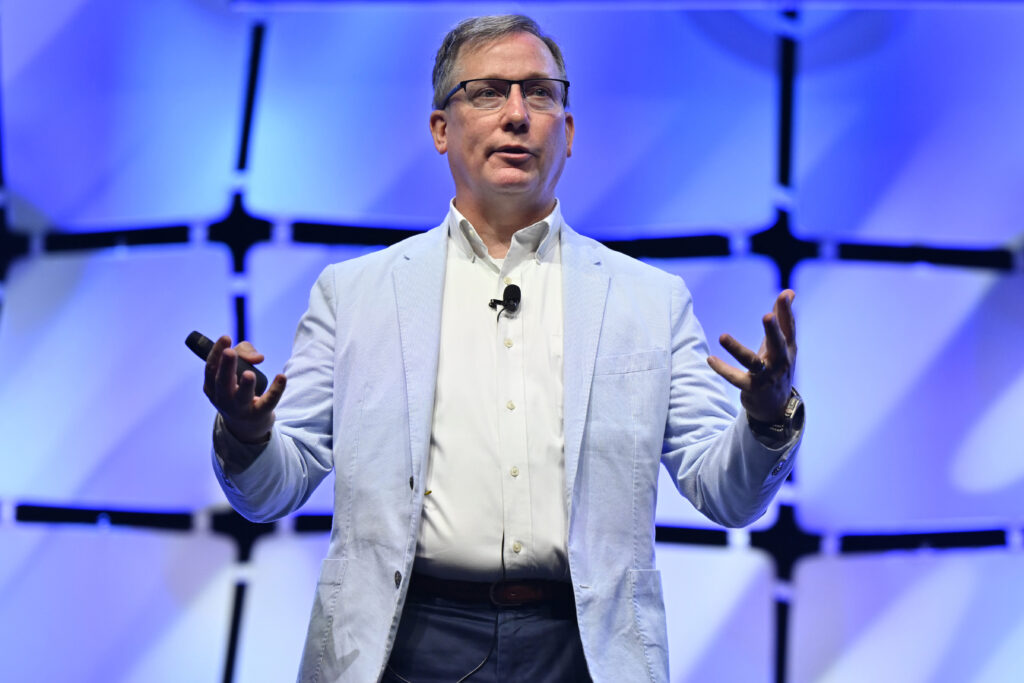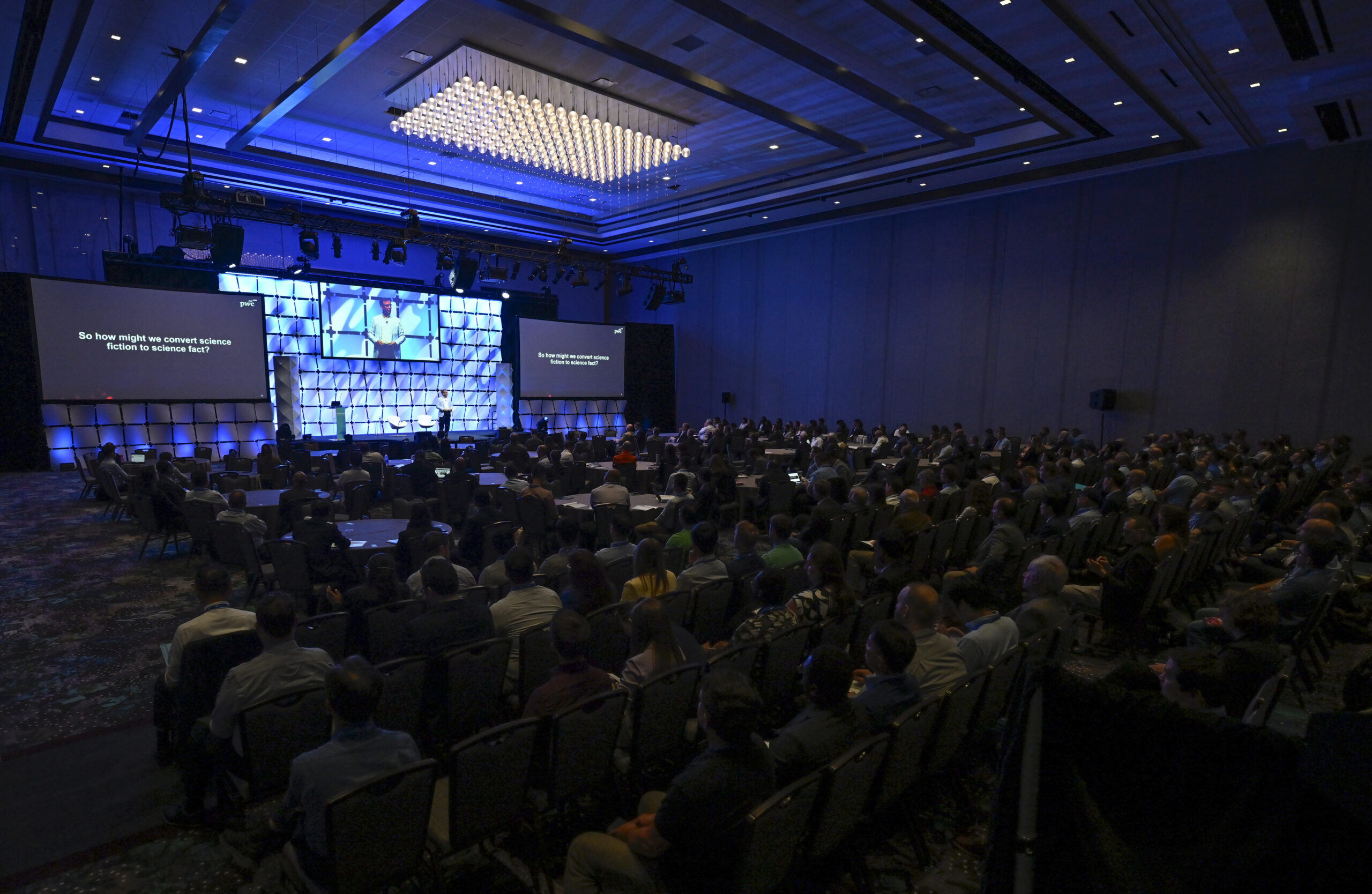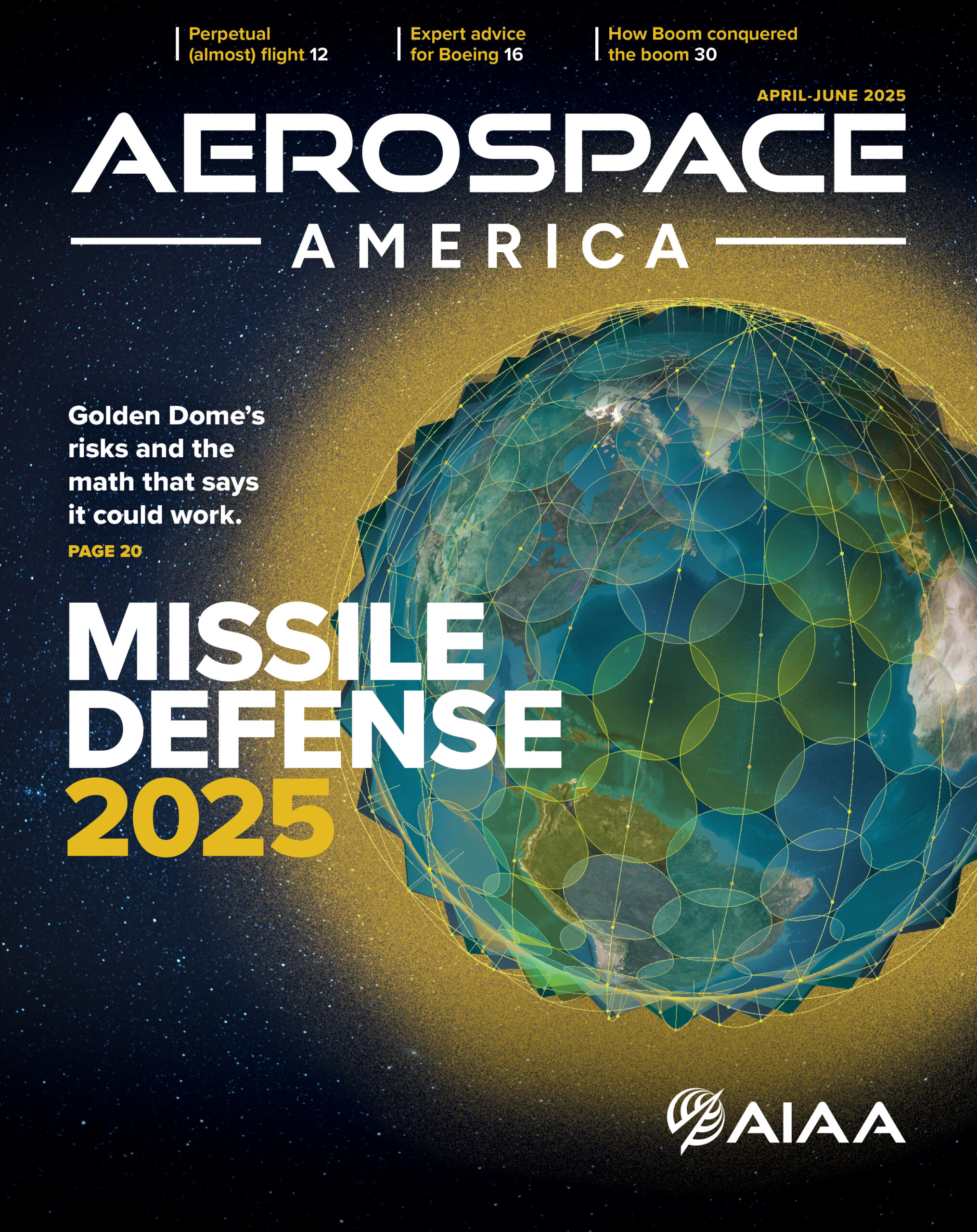Las Vegas – It’s the year 2050 and in city centers like New York, people are immersed in “vertical living,” with minimal need to go to a surface street to get places.
Departing for JFK Airport happens by rooftop in an electric vertical takeoff and landing (eVTOL) vehicle. No pilots are needed — the eVTOL is fully integrated into New York City’s urban flight management system, which is fully integrated and autonomous. Luggage is autonomously tagged and authenticated over the air and is put on the carousel without the passenger touching it.
The plane has no cockpit or pilot. Built with leading-edge composites and a titanium airframe for optimized strength, weight, and cost efficiencies, the hypersonic commercial aircraft reaches a half Mach as it leaves the runway and is tracked autonomously through space-based radar. Passengers enjoy a first-class flight experience: they sit in wellness pods, looking out a digital window with their virtual assistants ensuring their comfort as the aircraft speeds at Mach 5-8 through time zones and across oceans. The flight time from the vertiport at JFK to the final destination in Mozambique – three hours.
In this reality, the national airspace is equally transformed: overseen by a single expert who monitors advanced agentic systems, optimizing the airspace for safe transport of everything from delivery drones to air taxi services. Commercial hypersonic flights are now available, but without a cockpit or pilot.
This futuristic vision of aviation was how Dr. Tim Persons, a principal and AI leader at PwC with more than three decades of AI and digital experience, opened this year’s AIAA AVIATION Forum at Caesar’s Forum in Las Vegas.

“This is science fiction – the question is, how do we convert it to science fact?” he challenged the audience.
Prior to joining one of the largest global professional services firms, Persons served as the chief scientist for the U.S. Government Accountability Office (GAO) and the managing director for its science, technology, and digital team, where he led foresight and oversight services for Congress.
AI Will Not Replace Humans; It Will Empower Them
The future of aviation, according to Persons, is not about replacing humans; it’s about empowering them through advanced digital technologies. He emphasized that this digital-first reality doesn’t mean digital only.
“These are tools to facilitate the engineering, not to be the engineering. You still need the creative thinking; you still need the steering that would be required to operate on a massive scale – the data sets, the fluid dynamics, the metallic properties under duress that you would want to measure. You can now do that computationally. That’s where we have to think about how we do our jobs and say, ‘What do we want on the end and how do we think iteratively with digital tools that can move much more quickly at speed and at scale than we’ve ever been able to see before?”
Persons predicted that in the future, generative AI will be as inseparable from aerospace engineering as laptop computers are today.
Transitioning to a Digital-First Mindset
The future of aerospace is fundamentally about design-oriented, digitally-focused thinking with reimagined processes and business models. It’s something Persons learned firsthand in his own career journey.
While at the GAO he oversaw development of the F-35 Lightning II Joint Strike Fighter. The platform, the most expensive weapon system ever at the time, had an estimated $1.4 trillion in total lifecycle costs.
Speaking with the chief scientist of the U.S. Air Force, Persons repeated the question Congress was asking: Why did budgets for this program keep going up?
“He said, ‘Tim, you’re thinking about the plane as hardware. It’s really millions of lines of code with hardware peripherals. We haven’t been thinking about it from a digital-core-first perspective.’”
“Thinking in a digital way first, like my friend at the Air Force is the ask I have of the [aviation] community.”
He continued, “I’m very excited. This moment with GenAI and not just that – all AI, all digital, and all analytics … the ability to shift data around in real time, and the way we can now collaboratively work together that we’ve never been able to do before – we have to think and act differently and holistically. We can imagine the possibilities and then achieve them together with digital enablement and hardware outputs.”
During the Q&A, Persons fielded a pragmatic question about how certifying agencies need to get out in front of these emerging technology capabilities and provide a climate that will allow industry to bring about this future. He acknowledged how tough it is to be a regulator or certifier, noting that there is a training element required for these individuals to appropriately set policies.
“That’s something we can’t keep our eyes off the ball – that must be done because we want good rule making; we want good certification,” he said, urging companies to not take a tech-forward narrative to regulators without also embracing a risk-based approach and having candid conversations early on.
Asked if he thought the aviation industry’s commitment to achieve its net zero goals by 2050 is realistic, he stated that absolute zero likely won’t happen.
“I do think we can get close to zero. There’s a strong push right now into hydrogen fuels. I never thought I’d see the electrification of vehicles sold at scale that we now see with Tesla. We can learn a lot of lessons about the hybrid approaches [seen by other industries].”
Persons also discussed the role AI will play in the changing engineering workforce: “Engineers that have the ability to thrive in this environment will embrace digital as a means to an end … not the end itself.”
He cited, as an example, the introduction of laptops in schools, which fundamentally changed education. He observed that the laptop was the tool, but teachers had to learn how to teach to it and students had to get comfortable learning through it.
“Engineers will have a bright future by thinking more holistically but still creatively. You’re still in charge,” he said.
After the talk, Carolina Vergara, an AIAA Rising Star and a mechanical engineering student at the University of Houston, said, “It was incredible to see the future we could have for aviation. Imagining what aviation can do for us on a personal level as far as integrating generative AI, was so incredible to see,” said the Texas native, who is interning this summer at United Launch Alliance (ULA) in Denver, Colo.
Caterina Altman, a propulsion engineer at Lockheed Martin Aeronautics in Ft. Worth, Texas, who is part of the company’s RECAP program, was inspired as well. She captured her sentiments about the talk using a play on words from President John F. Kennedy’s famous quote during his first inaugural address: “Think not what AI can do, but what you can do with AI.”




